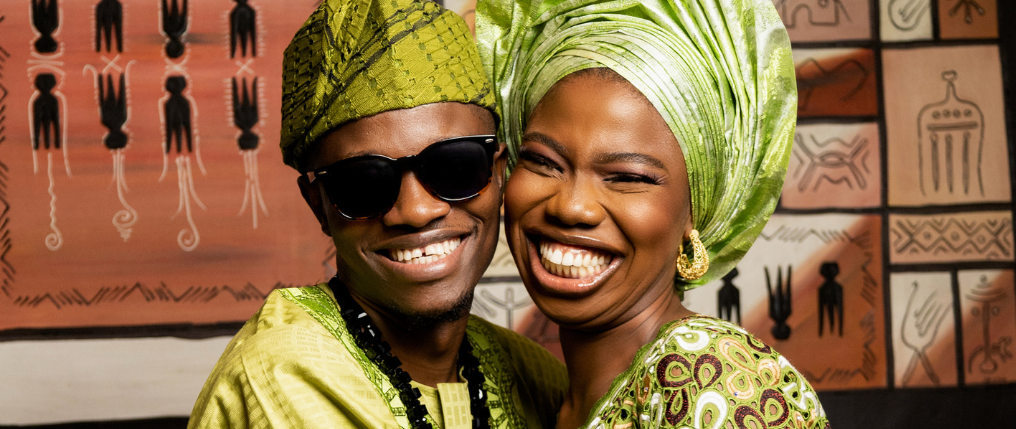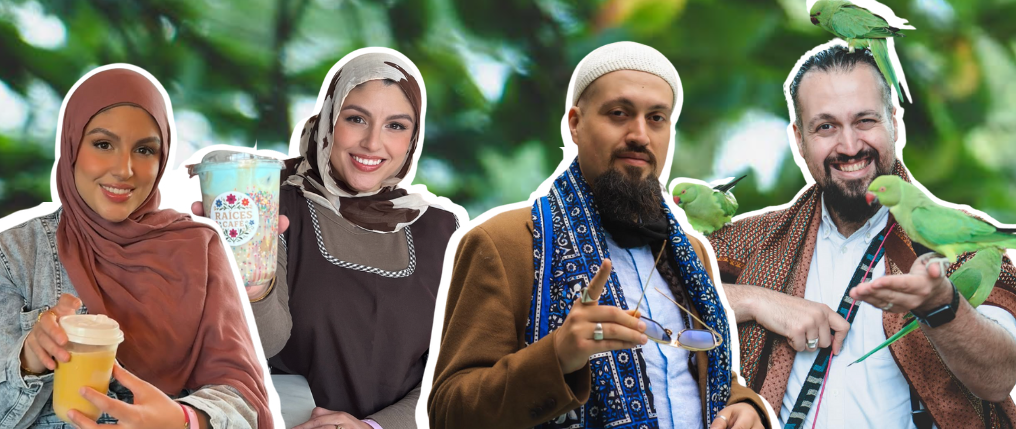For Kaosara and Ridwan, love wasn’t about blending in, it was about standing out. As proud Nigerian Muslims who found love through Muzz, they built profiles that celebrated their faith, culture, and authenticity. This Black History Month, we speak with them about how they represented their roots on the app. Their love story reminds us that embracing your roots is the real secret to finding a love that lasts.
As we celebrate Black History Month in the UK, what does being both Black and Muslim mean to you in the context of your love story?
Kaosara:To me, being Black and Muslim is a beautiful blend of strength, faith, and identity. It means celebrating our culture while staying grounded in Islam. In our love story, it represents unity where our shared values and experiences shape how we love and grow together.
Ridwan:Being Black and Muslim means carrying a double heritage of pride and purpose. It’s about knowing who we are, embracing our roots, and using that as a foundation for our relationship. Our love story isn’t just about two people meeting; it’s about faith connecting two worlds and proving that love rooted in Islam and culture can flourish anywhere.
We have an event in London coming up for Black History Month, curated solely for Black Muslims from the app to connect in real life. What advice or tips would you give to those who are nervous about meeting someone in real life, especially if they’ve never spoken to them before?
Kaosara:Firstly, pray before attending. Then, see it as an opportunity to connect and network with like-minded people rather than putting pressure on yourself to “find someone.” Be open-minded, enjoy the moment, and let your values and personality shine naturally.
Ridwan:I would say, go with good intentions and a clear mind. Be genuine, be respectful, and keep things halal. Sometimes, a simple smile or conversation can spark something meaningful. Just trust the process and be yourself.
When you were building your Muzz profiles, did you feel proud to represent yourself as Black and Nigerian Muslim? How did you showcase this?
Kaosara: Yes, I did. I was very proud to represent who I am. I made sure my profile reflected that by clearly including details about my tribe, state of origin, and religion. I wanted anyone viewing my profile to see that I am a proud Black Nigerian Muslim woman.
RidwanAbsolutely. I wanted my profile to reflect both my faith and my roots. I was intentional about showing that I’m a proud Yoruba Muslim man from Nigeria who values culture, family, and deen. I believe that being transparent about where you come from helps attract the right person, someone who appreciates your identity, not just your profile picture.
What advice would you give to other Black Muslims using Muzz who are looking for their life partner?
Kaosara:Be honest with yourself and with what you put on your profile. Be open-minded, allow yourself to be loved, and don’t rush the process. The right person will come along at the right time.
Ridwan:Be sincere in your intentions. Use Muzz as a means, not a miracle. Allah is the real connector. Be patient, make du’a, and don’t let rejections shake your self-worth. The right person will come with peace, not pressure.
Did your heritage and culture influence what you shared on your profile or how you presented yourself?
Kaosara:Absolutely. As a well-cultured Yoruba Muslim woman, I understand that my appearance and presentation say a lot about who I am and the kind of people I attract. So I was intentional about depicting my values; modesty, faith, and respect through my photos and profile details.
Ridwan:Definitely. Our culture teaches humility, respect, purpose and values that align with Islam. When I built my profile, I wanted it to speak to those principles. It wasn’t about perfection; it was about authenticity. I shared things that showed I was serious about faith and meaningful companionship, not just casual interaction.
How have you embraced your heritage within your marriage, and why is that important to you?
Kaosara:We’ve embraced our heritage through our beliefs, values, perspectives, and cultural practices. It’s important because it forms the foundation of the kind of home we want to build; one rooted in mutual respect, understanding, and faith.
Ridwan:For us, culture isn’t just a tradition, it’s a language of love. We pray together in Arabic, make our dua in both Arabic and Yoruba language because we believe Allah creates and understands it all. We also laugh, eat, and communicate in Yoruba. It’s in our food, our family bonds, and the way we respect elders. Blending culture and deen gives our marriage depth and identity.
What advice would you give to young Muslims who sometimes feel pressure to “downplay” their culture or identity when looking for a partner?
Kaosara:My advice is to gracefully embrace and showcase your culture. It’s part of who you are, and it helps attract someone whose values align with yours. Never feel the need to hide your identity to fit in. The right person will love and appreciate you for it.
Ridwan: I would say don’t compromise who you are. There’s beauty in being authentic. If you have to hide your identity to be accepted, then it’s not real acceptance. Islam doesn’t erase culture, it refines it. The right partner will celebrate your background, not make you shrink from it.
Did being Black and Muslim shape your experience on Muzz in any way either positively or with challenges?
Kaosara:Yes, it did. Being Black and Muslim came with pride. It made me intentional about who I connected with; people who understood and respected my background and values.
Ridwan:It definitely shaped my experience. Representation matters, and sometimes it felt like we were few, but that pushed me to stay hopeful. It reminded me that real love doesn’t have colour barriers, what matters most is faith, intention, and compatibility.
What helped you stay patient and confident in your search, especially as Black Muslims who don’t always see themselves represented in love stories?
Kaosara:Faith. I constantly reminded myself that Allah’s timing is perfect. What’s written for me will never miss me, and that gave me peace. I surrounded myself with positivity and trusted that my story would be different and it was.
Ridwan:Tawakkul! Trusting Allah completely. I knew that marriage isn’t a race; it’s a journey. Even when I had met awesome people and it didn’t work out, I saw it as a reason to keep trying. Good things do takes time. Patience, prayer, and purpose kept me grounded.
What do you hope your story inspires in the next generation of Black Muslims in the UK and beyond?
Kaosara:I hope our story inspires others to believe that genuine love is possible even in the least expected places. You can find someone who truly understands, values, and complements you while staying true to your culture and faith.
Ridwan:We hope it shows that love built on Islam and culture is timeless. That young Black Muslims don’t have to compromise their identity to find happiness. You can have both love and deen, tradition and growth.
Any final message to the Black Muslim community in the UK who are searching for their partner on Muzz?
Kaosara:Don’t lose hope. Keep praying, stay authentic, and trust the journey. Love will find you when it’s meant to, and when it does, it will be beautiful, fulfilling, and worth the wait.
Ridwan:Keep faith at the centre of everything. The right person will see you for who you truly are faith first, culture next, and personality. Your love story is already written; you just need to walk your path to it.
































